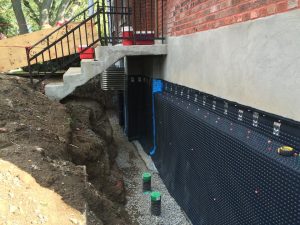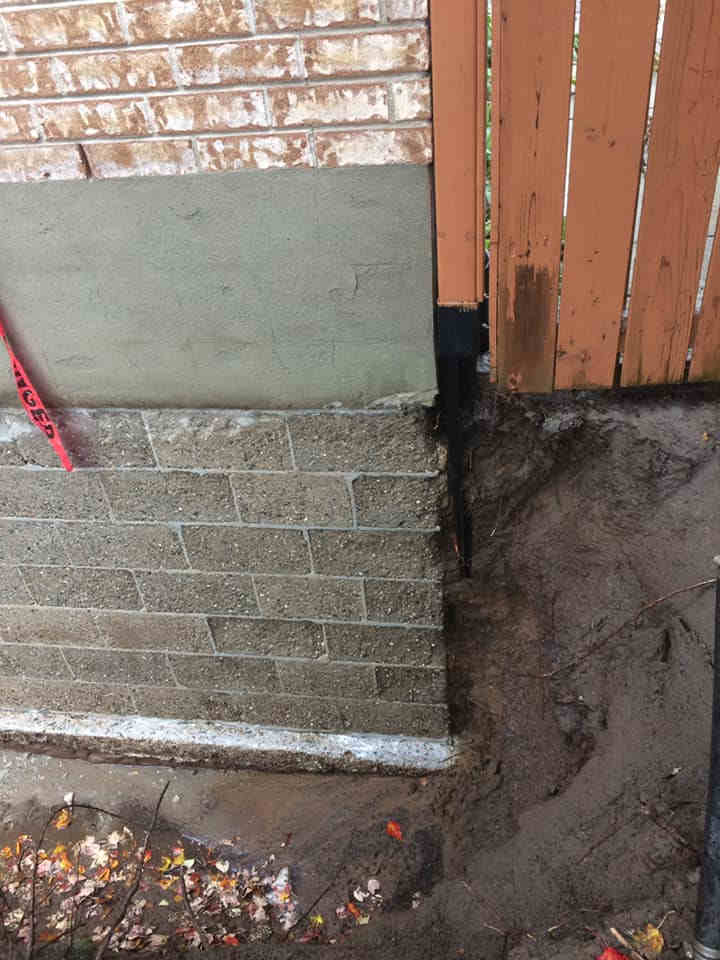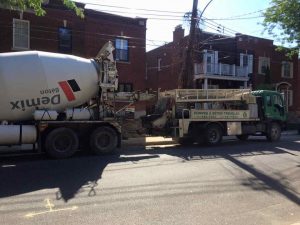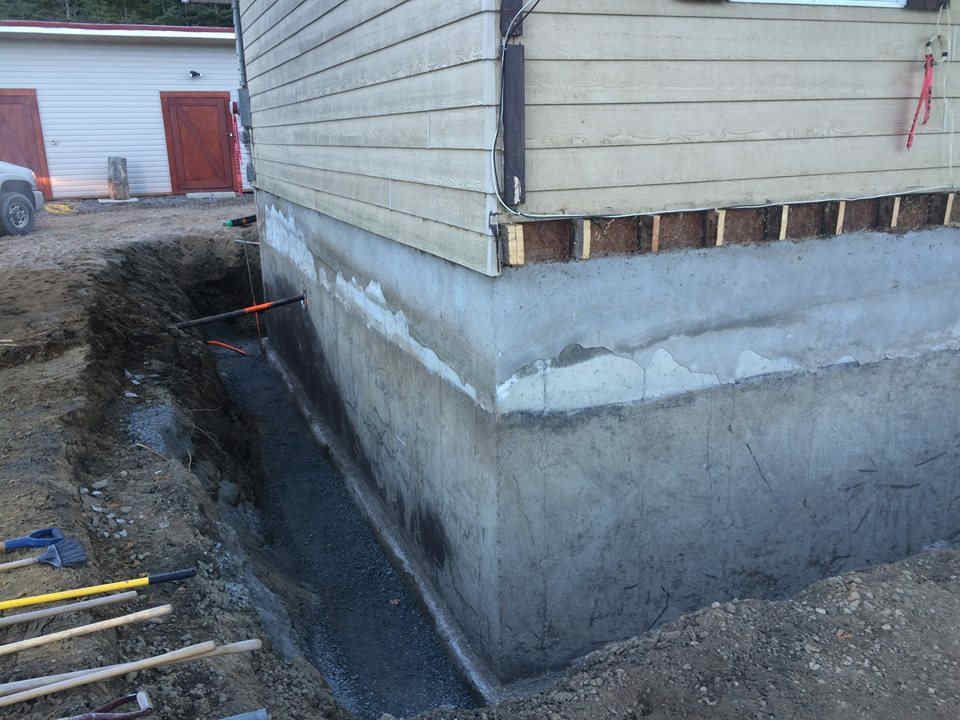Concrete is one of the most used materials in the world. Economical, robust and manoeuvrable, it is used to build bridges, foundations, sculptures and many others. It is important to distinguish between concrete and cement, which are often confused, considered synonyms.
In fact, cement is one of the 3 basic components of concrete serving as a binder.
Concrete has undergone a remarkable evolution over the past few centuries. There is now a variety of concrete types with varying strengths and properties. Application techniques are now well established and regulated for each type of concrete with steps to follow whose meticulousness guarantees a result of optimal solidity.
The methods of building concrete foundations have also evolved, becoming more and more durable and easily repairable.
Deal with a local foundation contractor whose 20 years of experience in concrete work provides you with sustainable structures and repairs.

Free submission*
PHONES :
How do I extend the life of a concrete foundation?
Although it is a material designed to be strong and durable, concrete is exposed to elements that cause it to deteriorate. The acidity ofthe soil, water, freeze/thaw cycles are examples of factors that can compromise the condition of a concrete and cause the foundation to crumble. It is precisely for this reason that steps are being taken to reduce the impact of these factors.
Evacuation of water
Keeping the water away from a foundation avoids a lot of problems. This is why a French drain system must be in place to evacuate groundwater. For optimal pipelineing, the development of positive slopes is also recommended
By moving water away near a foundation, one way to reduce the force exerted on the foundation wall by the cycle of freezing and thawing. Although concrete
Either very robust material, the force exerted by this cycle can severely damage it.
Waterproofing

Being the lowest point of a building, a foundation will inevitably be exposed (to varying degrees) to water. Over the years, concrete is likely to crack and thus create passages for water infiltration.
The installation of waterproofing membranes protects the foundation and prevents water infiltration. Concrete will remain dry and protected from accelerated degradation.
Isolation
Thermal insulation mainly concerns the sole of a foundation. Since in most cases a foundation is protected by a large amount of embankment, this protection is rarely necessary.
In cases where there is little embankment separating the sole from the surface, thermal protection is installed to prevent frost from penetrating the sole. High-strength insulating panels are placed horizontally. Without this protection, the freeze/thaw cycle may reach the base of the foundation and cause serious damage.
Foundation in concrete block or poured concrete?

You only have to look at the recent foundations to get the answer. It’s been a long time since we’ve built a concrete block foundation like the one in this photo against. Sometimes we see house extensions on block foundation, but again this is rare.
Concrete poured using forms has proven to be stronger and tighter. A solage of this type has the ability to better cope with the cycles of frost/thaw.
The link between the blocks is made of mortar. It is a material with a composition similar to concrete but does not contain aggregates, which makes it less durable. This difference increases the vulnerability of this type of foundation to lateral soil thrust and crumbling.
The only advantage of a block foundation is that the vacuum in the block allows air to enter resulting in a thermal barrier. Despite this advantage, this construction technique has virtually disappeared in Canada.
When a foundation is cracked,the intervention depends on the type of foundation. For a cast concrete flooring it is possible to repair it without problem with a technique adapted to the type of crack (active or passive). A cracked concrete block foundation can hardly be repaired given the vacuum inside the blocks. Waterproofing is usually the only way to prevent water infiltration.
Composition of concrete

Concrete as we know it hard and dry is the result of a mixture. Before moving to a solid state it is in rather liquid or manageable form which allows it to give its desired shape. Regardless of the type of concrete, there are 3 basic components that make it up:
- aggregate (sand, gravel),
- cement,
- Water,
The aggregate
The aggregate gives the concrete mass. It is the component that gives strength and durability to the mixture. The quantity and characteristics of the aggregates in the mixture have a direct impact on the handling of the concrete. Natural or artificial, there are a variety of aggregates used to make concrete such as sand, sand and gravel.
Cement
Cement is a bonding agent for concrete composed mainly of limestone andclay. It is a very fine white powder. With the contact of water this component forms a paste that create a hydraulic link. This allows the connection between the aggregates by coating everything. The cement will eventually harden and form a solid mass.
There are different types of cement such as Portland cement,Portland compound cement, high-furnace cement, etc.
Water
Water is the trigger, that is, it activates cement. A chemical bond will then be created between the cement and the aggregate to form fresh concrete. The reaction time extends over a rather indefinite period, but the application period is measured in minutes or hours. To make adequate reaction, the water must be drinkable and free of impurities.
Additives
Some concretes contain adjuvants to modify a feature or for better performance. For example, they can speed up the intake of concrete, make it more manageable, give a color to concrete, etc. These products represent a small percentage of the mixture. Examples of components that can be added include:
- Take accelerator
- Take slower
- Plasticizer
- Superplasticizer
- Air coach
- Pigments
Concrete types
A bridge, a house foundation and a sculpture are not built with the same type of concrete. The proportions of the basic components vary and other ingredients are added since the properties must be different. Concretes are therefore classified according to their characteristics:

- Conventional concrete
- Fibro concrete
- Self-placing concrete
- Decorative concrete
- High-performance concrete
- Projected concrete
These are examples of the types of concrete on the market. The choice depends on the work to be done. For example, for a hard-to-reach or highly rebar-holding area, a self-placing concrete is the ideal choice since it will cover all voids by placing itself at with gravity. Conventional concrete is used for foundations.
For a foundation repair,the type of concrete is chosen depending on the situation. A very adhesive concrete that does not require formwork is ideal for repairing a crack. For a horizontal large-area repair, self-placing concrete will be effective as it will cover the entire surface with gravity.
Compression resistance
Compression resistancevaries from concrete to concrete. This resistance is quantified in MPA. This measure normally varies between 15 and 50 MPA, beyond this interval it is a high-performance concrete.
Laboratory tests are carried out to assess the crushing force required to break the concrete. Depending on the maximum pressure, the resistance in MPA is given a value. For residential use, conventional concrete is generally used with a strength of 32 MPA.
Depending on the structure to be carried out, minimal resistance is required by the code (Article 9.3.1.6 of the NBC-MQ):

- Foundation walls: 15 MPA
- Soles: 15 MPA
- Basement slab: 20 MPA
- Freezing structure: 32 MPA
With the large number of problems identified over the past 25 years,APCHQ recommends higher resistance:
- Foundation walls: 20 MPA
- Soles: 20 MPA
- Basement slab: 25 MPA
- Freezing structure: 32 MPA
As a member of APCHQ, VOPAA follows the recommendations of this association for the repair of foundations, slabs or any other structure.
For example, the concrete slab made in Gatineau near Pierre-Laporte Street was made with concrete with a compression resistance of 32 MPA.

VOPAA Foundation Repair Specialist uses Sika brand concrete for all this concrete foundation work
This brand approved by the Quebec Ministry of Transport is ranked among the best.
With our services you will have quality structures and repairs.
PHONES :
Free submission within a 30 km radius. Beyond this radius, the $120 fee for the bid is refunded if the client signs the contract for the completion of the work with us.
